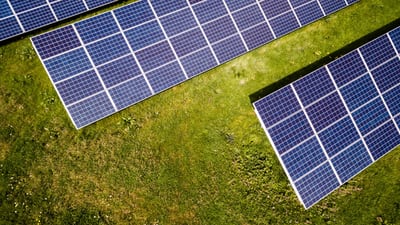CHINA: CLIMATE CHANGE AND ENERGY
CHINA: CLIMATE CHANGE AND ENERGY

INTERNATIONAL LANDSCAPE
After many years prioritizing the “Right to Development” and avoiding endorsing international agreements, China changed its environmental policy in 2017 and subscribed to the Paris Memorandum of Understanding. At that time, economic studies assessed the social and healthcare impact derived from pollution as an estimated cost of 6% of Chinese GDP from 2000 to 2010.1 Even though without considering those economic studies, diseases caused by pollution became a burden in social assistance and healthcare system for Chinese population.
Since 2012, the 18th National People’s Congress addressed the importance of ecological civilization. China gradually shows the ambition to be a world leader of clean energy and environmental protection through the reforms implemented for emission reduction, investment in renewable energy plants and recognition of environment protection as a pillar of national security and economic and industrial development [China and the environment].
MAIN COMMITMENTS
China is still classified as an emergent country and although it is not bound to reduce the absolute CO2 emission levels, they have done their duty. China committed the emission reduction from 2030 and the carbon intensity (quantity produced by economic growth unit) by 40% to 50% up to 2020, achieving the objective two years ahead. Besides, China committed to increase the use of non-fossil energy sources over 20% of total consumption.
China´s commitment to alternative energy production has been implemented since 2017 through massive investment in clean technologies, solar energy, wind power, biomass and geothermic plants, exceeding combined figures from the US, UK and France.
In parallel, by the end of 2018, the Chinese Government announced the National Program of Limit and Emission Trading, the so-called “cap and trade”, after the pilot test carried out at the regional level and based on a free-market scheme.
So far, emission allowances have been assigned through public auction establishing an absolute total emission limit and creating the largest carbon emission market in the world, quantified by scientists1 on 5 gigatons per year. As a reference, the European Union commercial scheme covers 1.8 gigatons per year.
Until last year, 1,700 power companies2 were included, with total carbon dioxide emission above 3 billion tons, making it the world´s biggest market. Under this national program, businesses are assigned emission quotas, and those producing more than their share of carbon could buy unused quotas on the market, from those which emit less.
China will attend the Climate Change Summit in Madrid having reached her 2020 carbon emission objectives three years ahead of schedule, mainly due to the implementation of the country´s carbon trading policies. There is also a relevant evolution in the portion of energy from carbon source in China´s combined energy supply, reaching 59% of total energy supply in 2018, starting from 68% in 2012 and to decrease to 55.3% in 2020.
China is going to be required a deeper involvement in dealing with further fossil fuel, such as oil or gas. The addition of figures from oil and gas consumption would increase China´s carbon dioxide emission figures in more than 200 million tons per year, representing a relevant influence on the greenhouse gases that is forecasted as 2% impact in 2019 and 1.2% in 2020.1

INTERNAL MANAGEMENT
Moreover, tackling climate change is a big challenge, but also a good opportunity for China, in which, as it usually happens in the implementation of most of the strategic policies, the creation of new regulations will be a relevant factor, plenty of operational issues.
Due to the environmental-related competences transferred to Local Governments, there is a local regulation developed under each region initiative. Different legislative criteria and implementation approaches are considered to reach the local objectives; around 42 national plus 25 subnational jurisdictions are pricing carbon emission. Therefore, coordination mechanisms among local development plans may generate some mismatches during the first stage of the national plan implementation.
There are also different implementation criteria arranged by sectors. At a national level, not all sectors are obliged to accede to the emission reduction plan. In the first stage, the emission reduction program is only mandatory for the electricity sector, and when conditions allow, the regulation will be extended to other industrial areas such as petrochemical, construction material and aviation sectors. However, state owned companies, among others, are not included in the list of mandatory adherence to the emission reduction plan.
Regarding the electricity sector, the spread effect may become relevant, with three gigatons of carbon dioxide emissions per year, which means 8% of global emissions. Industrial sectors have received additional support, i.e. financial among others, for the improvement of power plant efficiency since the cost increase impact cannot be directly transferred to final consumer.
Additionally, special environmental courts have been established with the mission of controlling the companies´ compliance with environmental requirements. Those courts are capable to solve conflicts based on more accurate criteria regarding environmental protection. The judicial reform has influenced companies´ environmental investment and its position about the implementation of effective plans and alternative measures to comply with environmental regulation. The reform has also influenced the legal advice and support required by companies.
IN A NUTSHELL
In a few days, in the frame of the Climate Change Summit to be held in Madrid, A&Z will closely follow the development in environmental commitments to provide appropriate advice and support businesses in China.
In that sense, it is important to understand to what extent they can translate into real changes for industries and to explore the advantages of the new scenario. China has been able to fulfill certain climate change commitments with low economic growth impact. From 2005 to 2015, China's economy grew by 1.48 times, and at the same time, the carbon emission intensity dropped down by 38.6 percent. Such a positive balance even does not include the collateral benefits of the living conditions of its inhabitants.
At the microeconomic level, the improvement in production methods could be translated, from companies´ perspective, into improvements in the market access, extending the ambition from a domestic market to products and services intended for other international markets.
1 PRIVATE "TYPE=PICT;ALT=Carbon price - map - World Bank"MIT Thecnology review. "Si queremos gestionar las emisiones, debemos almacenar carbono"
2 https://chinaenergyportal.org/en/national-carbon-emissions-trading-market-establishment-program-power-generation-industry/



